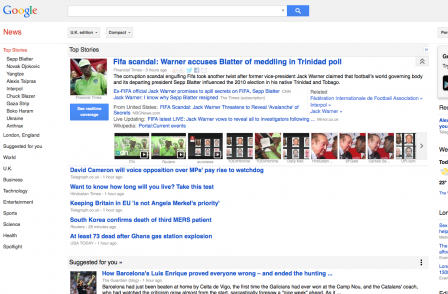
Commercial director of the Newspaper Licensing Agency, Andrew Hughes, responds to criticism of the body's business model
In his blog earlier this week David Benigson of Signal suggested newspapers and NLA media access were missing a trick by not adopting a Spotify-style model – low cost, high volume – for news aggregators. A challenge is always welcome, and new ideas ditto, but I’m afraid David is not on a winner here.
A little bit of context might help first. NLA fought a four-year battle with Meltwater through the courts to establish the principle that paid-for use of newspaper web content is protected by copyright and the fees we proposed were reasonable. We won, and have established one of the very few licensing systems for web content. Without that win, the debate could not even start.
Now, over 30 media monitoring companies (but not, incidentally, Signal itself) are licensed and we hold around 9,500 direct licences covering 200,000 businesses for use of web material. Over 1,000 newspaper websites and a further 1,000 magazine sites are covered. Publishers get 80 per cent of the revenue, which is a low seven-figure sum, about 3 per cent of the £30m-plus we paid publishers last year. David wants to boost publisher revenue: we plead guilty to doing just that.
We very strongly doubt whether the situation for publishers would be improved if we changed our business model as David proposes. Professional media monitoring is a very well established business requirement typically of larger companies and their PR advisers – a niche service bought by about 25,000 users. There isn’t an obvious pent up demand for lower priced services from a wider audience.
If you have to monitor media for references to a specialist subject, you do it. Unlike the consumer demand for hard-to-get music, press monitoring is a professional requirement for a smallish group of business users. It’s not for fun. I haven’t seen my daughter – a Spotify user – claim she needs press cuttings and wants to pay £10 pm for them.
Perhaps the best proof is that Google News and many other free aggregator services have been around for years (13 in Google’s case) without any discernible impact on the core paid-for media monitoring market and with limited consumer impact. Google News is not a major traffic driver to newspaper sites; search, Twitter and Facebook are more relevant. Would applying charges make Google News more attractive? Not when I last went to business school. NLA has – with the newspapers wider advertising interests in mind, steered well clear of consumer services.
The assumption that Google would sign up to a paid model is itself in doubt. If you have been following their approach in Germany and Spain (along the lines of ‘make your content free or we drop you from search’) you will realise how unlikely that is.
Licensing web content has challenges and we welcome constructive ideas. We certainly are aware that digital pennies can in some markets be greater than analogue pounds. But – as most publishers know to their cost – pennies are sometimes just pennies. We look forward to Signal applying for a licence and seeing how the system really can work for the publishers that David wants to help.
Email pged@pressgazette.co.uk to point out mistakes, provide story tips or send in a letter for publication on our "Letters Page" blog
